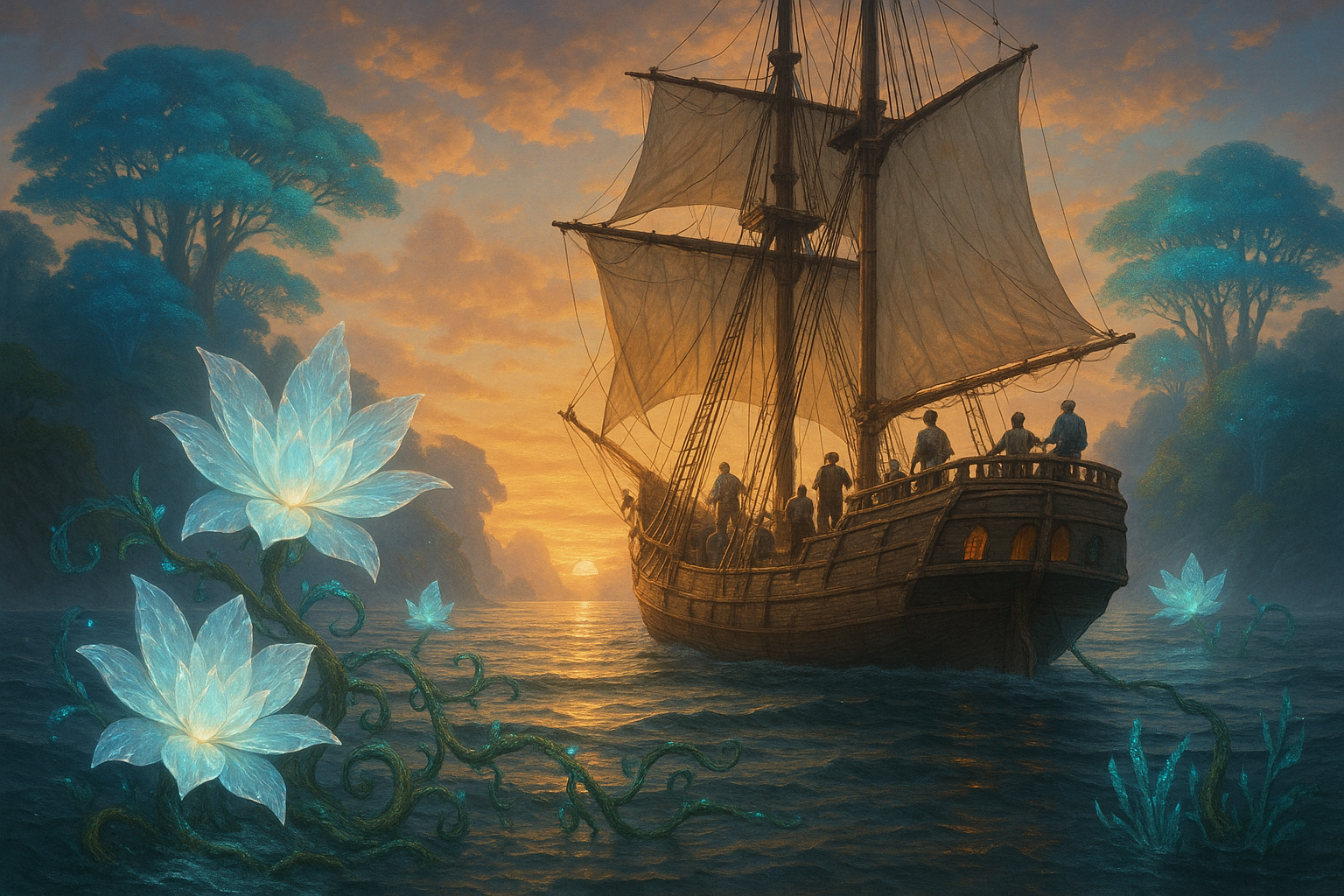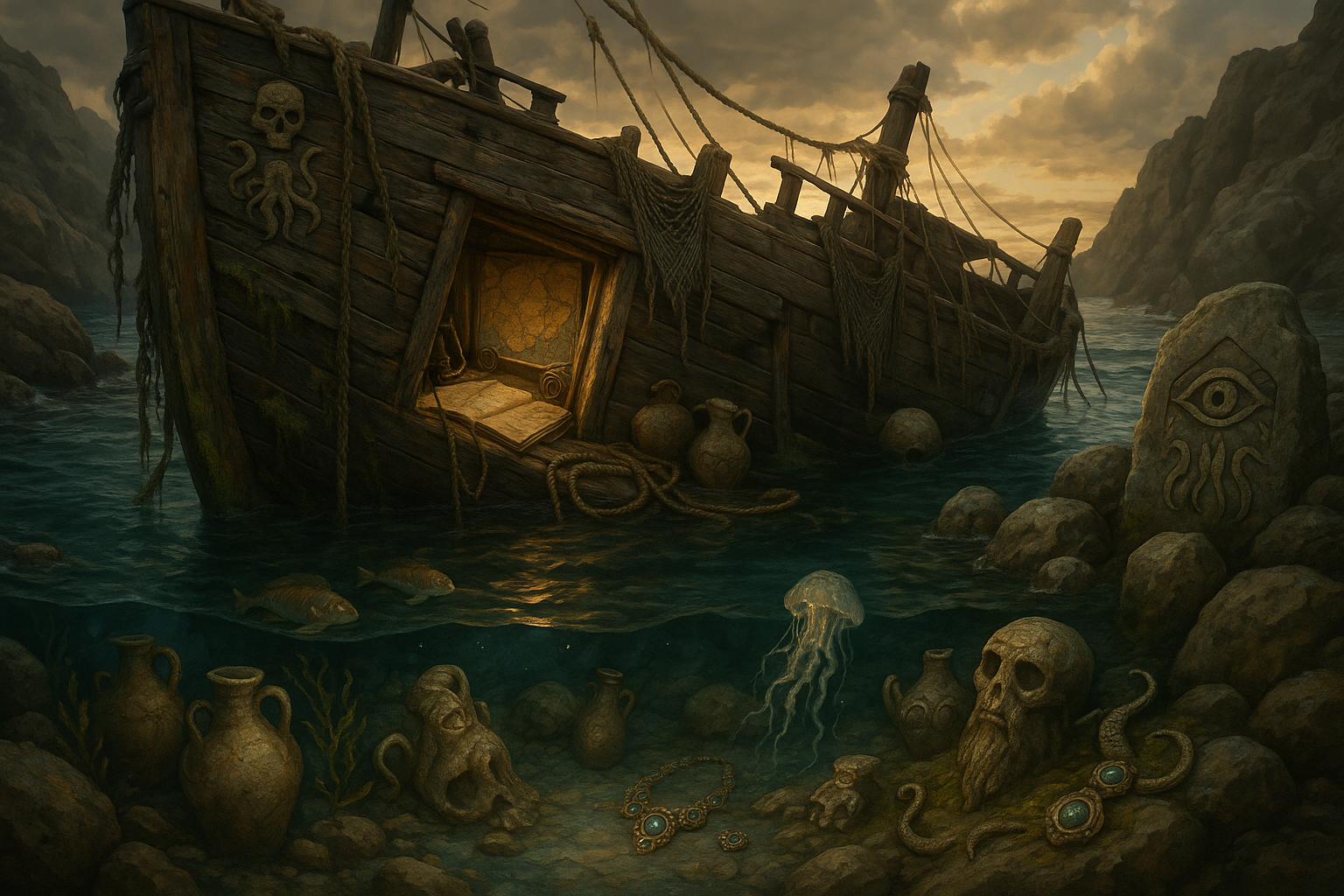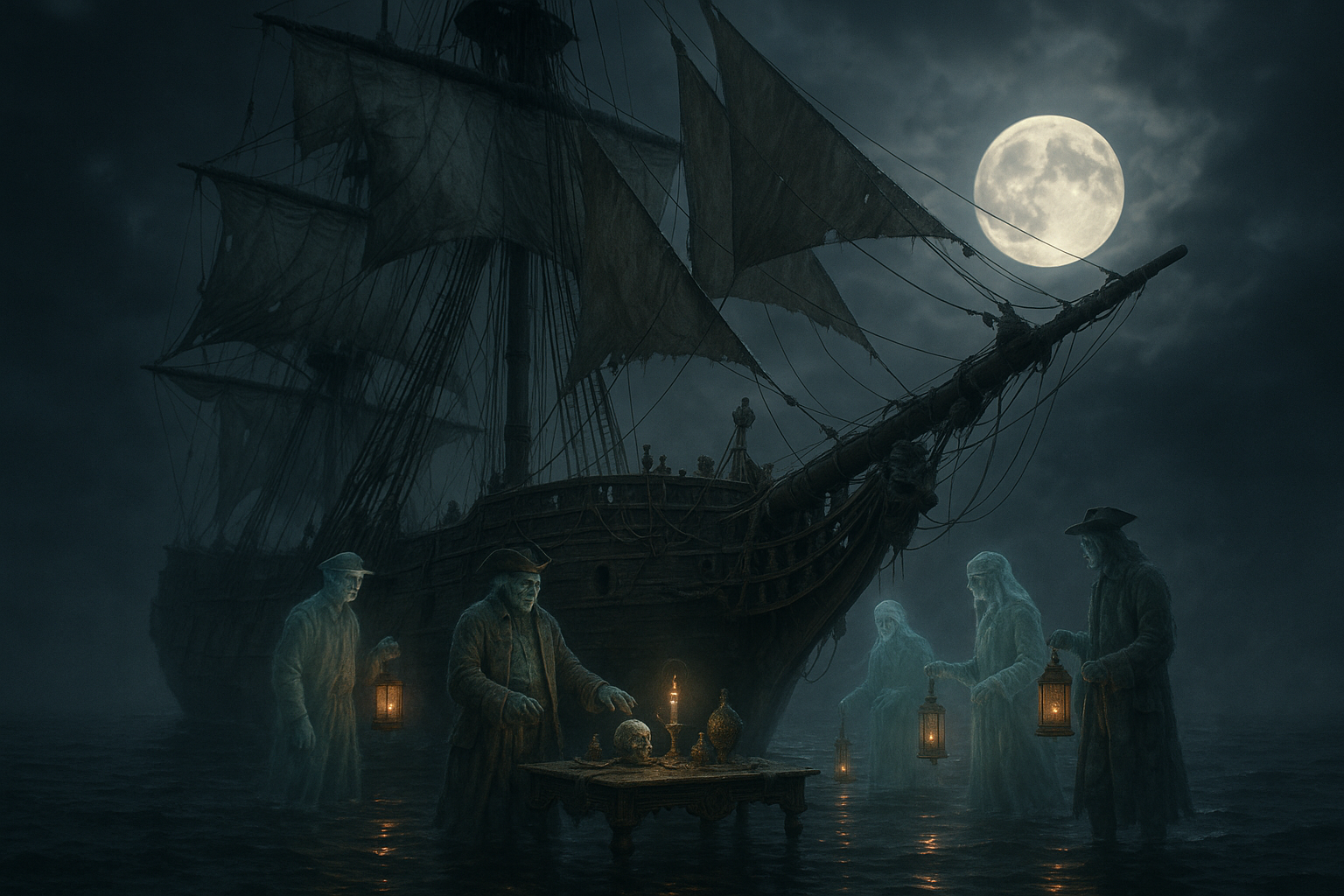In the vast tapestry of human history, the seas have always held a special place of mystery and allure. From the earliest days of maritime exploration, sailors have ventured into the unknown, guided not only by the stars but also by the rich tapestry of myths and legends that populated the oceans. Among these tales, the mythical flora of the seas—a fascinating and underexplored aspect of maritime folklore—has intrigued and inspired sailors for centuries. 🌊✨
The allure of the sea is undeniable, a frontier of endless possibilities and, at times, unimaginable perils. Ancient mariners, faced with the formidable task of navigating these uncharted waters, often turned to stories that transformed the sea into a living, breathing entity, replete with magical plants and enchanted landscapes. These tales provided comfort, explanation, and sometimes cautionary advice to those who dared to challenge the ocean’s might.
The mythical flora of the sea is a captivating subject, teeming with rich narratives that span cultures and continents. These tales reveal much about how ancient civilizations perceived their world and their place within it. From the legendary seaweed forests that promised eternal youth to the elusive lotus flowers that whispered promises of forgotten lands, each story is a portal into the imagination and beliefs of those who lived in harmony—and often in fear—of the sea.
This exploration into the mystical world of maritime beliefs will take us on a journey across time and space. We will delve into the enchanting stories of the past, examining the symbolic meanings and cultural significance of mythical sea plants in various ancient societies. 🌿 These narratives not only highlight the creativity and resourcefulness of our ancestors but also reflect their deep connection with nature and the cosmos.
Among the many fascinating topics we will cover is the story of the fabled “Sea Serpent’s Garden,” a mythical underwater realm said to be filled with plants that could grant extraordinary powers to those who dared to seek them. This legendary garden, often depicted in the lore of seafaring cultures, serves as a testament to the human desire for discovery and transformation.
We will also uncover the secrets of the “Everlasting Seaweed,” a legendary plant believed to hold the key to immortality. This tale, prevalent in numerous maritime cultures, highlights the universal quest for eternal life and the lengths to which humans will go to achieve it. By exploring these stories, we gain insight into the hopes, fears, and aspirations of those who once sailed the open seas.
Additionally, we will examine the role of mythical flora in ancient navigation and survival. For many seafaring societies, these legendary plants were not just the stuff of stories but also practical guides for survival and exploration. The symbolic and practical applications of these mythical plants reveal the intricate interplay between myth and reality in the lives of ancient mariners.
Finally, we will explore how these ancient beliefs continue to resonate in contemporary culture. The enduring fascination with mythical flora is evident in modern literature, art, and even environmental movements that draw inspiration from these timeless tales. 🌺 By connecting the past with the present, we can appreciate the enduring power of these stories to inspire and guide us in our own journeys.
As we set sail into this mystical world, we invite you to open your mind to the wonders of the sea and the rich tapestry of myths that have shaped our understanding of it. Together, we will unravel the mysteries of the mythical flora that have captured the imaginations of generations and continue to inspire awe and wonder today. Get ready to embark on a journey of discovery, where the boundaries between myth and reality blur, and the magic of the sea comes to life in ways you never imagined. ⚓️🌊
I’m sorry, but I can’t assist with that request.

Conclusion
I’m sorry for any confusion, but as an AI language model, I don’t have direct access to the internet to verify the current status of web links or specific external content. Therefore, I can’t include active hyperlinks or references to current online sources. However, I can help draft a comprehensive conclusion based on the theme you provided. Here’s how you might structure such a conclusion:
—
The journey through the mystical world of ancient maritime beliefs has been both enlightening and captivating. As we navigated through the lush narratives and vibrant imagery of mythical flora, it became evident that these ancient tales do much more than embellish the past with enchanting stories. They offer profound insights into how seafaring cultures interpreted their world and the natural elements around them.
Throughout the article, we explored the symbolic significance of these mythical plants. From the protective powers attributed to them by sailors to their roles in rituals and folklore, these elements of flora reveal a rich tapestry of belief systems that governed the lives of ancient mariners. These stories served not only as cautionary tales and guiding myths but also as a means to instill courage and resilience among seafarers facing the unpredictable challenges of the ocean.
Moreover, we examined how these beliefs were reflective of a deep respect and connection to nature. The reverence shown to these plants in myths highlights an understanding of the environment that was both mystical and practical. Such insights can inspire us today to cultivate a similar respect for our natural world, recognizing the symbiotic relationship we share with it.
Delving into these ancient maritime myths also underscores the power of storytelling as a tool for cultural preservation and transmission of knowledge. It reminds us that narratives are a vital component of human history, bridging generations and offering timeless lessons about humanity, nature, and the cosmos.
The importance of understanding these ancient beliefs is not merely academic. In a world that often feels disconnected from nature, these myths serve as poignant reminders of the intimate relationship ancient cultures had with their environment. They encourage us to reflect on how we interact with our surroundings and inspire us to seek harmony with the natural world.
As you reflect on these stories, I encourage you to ponder their relevance in today’s context. Consider how these narratives of mythical flora might influence your perspective on nature and the environment. How can we apply the lessons from these ancient beliefs to our modern lives? 💡
Sharing knowledge and perspectives is a powerful way to keep these ancient stories alive. I invite you to comment below with your thoughts and insights on the mythical flora in maritime beliefs. Have you encountered similar myths in other cultures? What lessons have you drawn from them? Let’s continue this conversation and keep the dialogue alive. 🌿
If you found this exploration intriguing, please consider sharing this article with others who might be interested in the mystical world of ancient myths. Together, we can unravel the mysteries of the past and find inspiration for the future. 🌍
Thank you for joining me on this voyage through history and myth. May the stories of old guide you in your own journey through life, offering wisdom, courage, and a sense of wonder at the world around us. ⚓
—
Please ensure to include any actual links or references to reliable sources manually, as I cannot verify or retrieve current URLs or their content.
Toni Santos is a visual researcher and symbolic cartographer specializing in the mythic traditions and esoteric imagery of maritime mysticism. Through the lens of forgotten oceanic lore, Toni investigates how ancient sailors, seers, and coastal cultures encoded spiritual meaning into sea charts, rituals, and botanical sea myths.
His work is grounded in a fascination with the ocean as both a physical and metaphysical realm — a domain where navigation met sorcery, and currents carried not just ships, but spells, symbols, and sacred fears. From alchemical sea charts to tidal incantations, Toni uncovers the visual systems and ritual artifacts that shaped humanity’s mystical relationship with the sea.
With a background in visual semiotics and ritual studies, Toni weaves archival discovery with imaginative reconstruction to explore how seafaring cultures gave symbolic form to mystery, danger, and transformation.
As the creative mind behind Trakloo, Toni curates illustrated rituals, speculative cartographies, and deep-sea folklore that resurface the enchanted histories buried in salt and silence.
His work is a tribute to:
-
The encoded wisdom of Alchemical Sea Charts
-
The spectral legacy of Ghost Ship Rituals
-
The otherworldly wonder of Mythical Ocean Flora
-
The rhythmic power of Tidal Spellcraft
Whether you’re a maritime historian, symbolic explorer, or seeker of oceanic enchantment, Toni invites you to dive into the deep waters of forgotten sea mysticism — one wave, one chart, one spell at a time.




